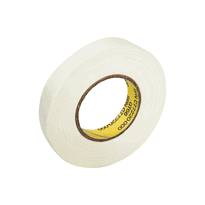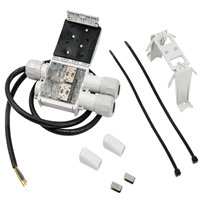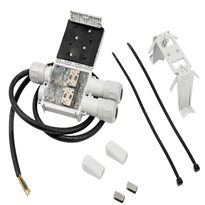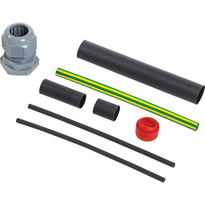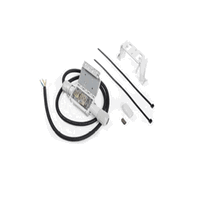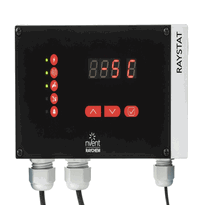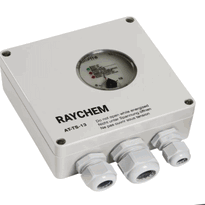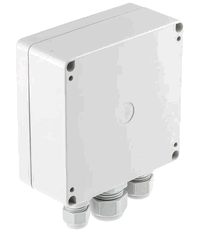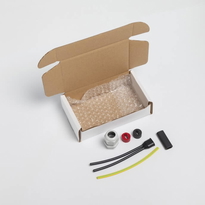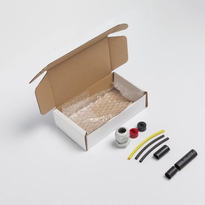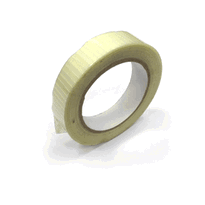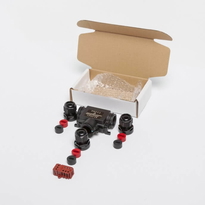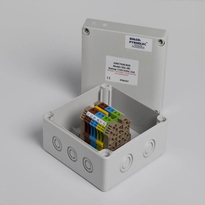Electric Heat Tape for Water Lines
Electric heat tape prevents water pipes from freezing by providing targeted, controlled heat. Various types are available to suit different needs; self-regulating tapes adjust their output based on temperature, while constant wattage tapes deliver a steady level of heat. Proper installation involves measuring the length of the pipe accurately, securing the tape every 15 to 30 centimetres, and insulating with waterproof materials to ensure safety and efficiency.
Safety measures are essential and include grounding outlets, conducting regular inspections, and avoiding installation near combustible materials. To maximise efficiency, ensure correct positioning of the tape, use high-quality insulation, and consider automatic features that turn the tape on and off as needed. Environmental factors, such as exposure to moisture and fluctuating temperatures, can influence both the durability and performance of the system.
Following these guidelines will help ensure optimal safety, longevity, and effective operation of your electric heat tape in diverse conditions across the UK.
Types of Electric Heat Tape Suitable for Water Lines
When choosing electric heat tape for water pipes, it's important to understand the range of options available, as each type offers unique features suited to specific environments and needs.
Self-regulating heat tape adjusts its heat output automatically based on the ambient temperature. It contains a conductive core that alters its conductivity to control power consumption without the need for manual adjustments. This type is energy-efficient and reduces the risk of overheating, making it a safe choice for general use around water pipes.
Constant wattage heat tape, on the other hand, delivers a consistent amount of heat along its entire length, regardless of ambient temperature changes. It's particularly suitable for critical applications or in extremely cold conditions where reliable, continuous heat is required to prevent pipes from freezing.
Non-self-regulating heat tape maintains a steady level of heat output regardless of fluctuations in environmental temperature. While it offers reliable performance in consistently cold conditions, it tends to consume more energy than self-regulating options and should be used judiciously to optimise safety and efficiency.
Understanding these distinctions helps in selecting the most suitable type of heat tape based on the type of pipe, the climate conditions, and safety requirements. Proper choice ensures the protection of water lines from freezing, particularly during colder months. Additionally, considering a company with manufacturing expertise like ProTech Global can help ensure the quality and reliability of the heating solution chosen.
Proper Installation Practices for Freeze Protection
Proper installation of electric heat tape for freeze protection requires careful planning and adherence to safety protocols to ensure effective performance and minimise risks.
Before commencing, thoroughly inspect pipes for any leaks or damage. This helps prevent insulation deterioration and reduces fire risk. Confirm that the heat tape chosen is automatic and compatible with the pipe material. Using unsuitable types may cause damage, particularly on plastic pipes.
Accurately measure the length of the pipe to be protected and determine the depth of the local frost line. This ensures that the heat tape covers the necessary sections for effective freeze prevention.
Position the heat tape at the start of the pipe near the power source (plug end) and run it along the length of the pipe, ensuring no crossing or overlapping occurs.
Secure the tape every 15 centimetres with suitable electrical tape to maintain consistent contact with the pipe surface. Properly securing the tape helps prevent movement and ensures uniform heat distribution, which is essential for effective freeze protection.
Wrap the pipe with at least 13 millimetres of fibre-glass insulation, adding waterproof layers if needed to protect against moisture infiltration. Proper insulation helps retain the heat generated by the tape, improving efficiency and protection. Selecting insulation with superior thermal insulation properties can significantly enhance overall effectiveness.
Electrical connections must adhere strictly to manufacturer instructions and comply with local electrical regulations. Failing to follow electrical standards can result in safety hazards or system failure.
Always connect the heat tape directly to a Ground Fault Circuit Interrupter (GFCI) outlet and avoid using extension cords.
Regularly inspect the connections for damage or deterioration.
Following these steps carefully will help ensure your freeze protection system is both effective and safe, safeguarding your pipes during cold weather.
Safety Measures to Ensure Safe Use of Heat Tape
To ensure the safe use of heat tape, it's essential to implement specific safety measures that minimise the risk of electrical hazards, fires, and equipment failure. Regular inspections of the heat tape and its connection points help identify signs of damage or wear, such as frayed wiring or exposed components. Always plug 3-prong plugs into grounded outlets for proper grounding to prevent electrical shock hazards. Proper earthing ensures a safe dissipation of electrical current, reducing shock hazards. Using correctly rated circuit breakers and ensuring outlets are protected by Residual Current Devices (RCDs) prevents overloads and short circuits. It's vital to follow manufacturer instructions carefully for installation and operation, avoiding modifications that could compromise safety. Certified heat tapes undergo rigorous testing to meet safety standards, which is crucial for preventing potential fires. Additionally, keeping the area around the heat tape clear of combustible materials reduces fire risks. Proper sealing and insulating of electric connections with airtight tapes can help prevent dust or moisture ingress that might cause electrical problems. These procedures create a safe environment and protect property and individuals from preventable accidents.
Tips for Maximising Efficiency and Longevity
Achieving optimal efficiency and prolonging the lifespan of heat tape requires careful attention to installation, operational practices, and ongoing maintenance. Proper installation begins with positioning the plug end near the power outlet to prevent the use of unsafe extension cords.
The heat tape should run the full length of the pipe, extending below ground to the frost line to ensure comprehensive protection against freezing temperatures. Using appropriate insulation materials can greatly enhance the effectiveness of the heat tape and prevent heat loss. Secure the heat tape firmly using high-quality electrical tape and cover it with suitable insulation material. In areas exposed to moisture, consider adding waterproof covers to enhance durability.
The use of automatic, self-regulating heat tapes fitted with thermostats is recommended, as they adjust power output based on the pipe’s temperature. This not only conserves energy but also reduces the risk of overheating. Self-regulating heat tapes incorporate fire safety features that minimize fire risk during operation, making them a safer choice for water line protection.
Regular inspections are essential. Check for leaks, physical damage, and any deterioration in insulation. Prompt repairs should be undertaken to maintain system integrity.
Utilising timers can help control when the heat tape operates, focusing its activity during critical weather conditions, which minimises unnecessary energy use and extends the lifespan of the system.
Considerations for Different Environmental Conditions
Environmental conditions greatly impact the selection, installation, and operation of electric heat tapes for water pipes. In colder regions of the UK, higher wattage heat tapes are essential to keep pipes warm and prevent freezing, particularly in uninsulated or underground sections. Properly assessing environmental factors ensures optimal performance and longevity of heating systems. Self-regulating heat tapes adjust their output automatically based on ambient temperature, which enhances efficiency during changing weather patterns. For areas prone to extreme cold, cables with mineral-coated elements can withstand temperatures up to 1,000°C, providing added resilience against harsh conditions. These features make the reflective aluminium foil layer especially valuable for outdoor applications by helping to reflect radiant heat and maintain temperature stability. Outdoor and damp environments demand durable, waterproof, and UV-resistant jackets on the tapes, along with robust accessories such as vapour barriers and corrosion-resistant connectors. These features help prevent moisture ingress and damage from weather exposure. Proper installation is crucial. Ensuring the heat tape covers the entire length of the pipe down to the frost line, combined with effective insulation, is essential for safe and efficient system performance. Tailoring installation practices to the specific environmental challenges will help optimise the longevity and reliability of water pipe heating solutions across different UK locations.
Conclusion
Selecting the appropriate electric heat tape, following proper installation procedures, adhering to safety protocols, and considering environmental conditions are essential for effective freeze protection of water pipes. Correctly choosing the right heat tape suited to your specific application ensures optimal performance and energy efficiency.
Proper installation is crucial; this includes securing the tape firmly along the length of the pipe, avoiding sharp bends, and ensuring good contact with the pipe surface. It is also important to follow the manufacturer's guidelines for wiring and connection methods to minimise the risk of electrical faults.
Safety protocols must be strictly observed. Only qualified professionals should carry out electrical connections, and all work should comply with applicable UK electrical safety standards and regulations. Installing a reliable thermostat or thermostat controller can prevent unnecessary energy use and safeguard the tape against overheating.
Considering environmental conditions, such as exposure to moisture, snow, or extreme cold, will help determine the most suitable type of heat tape and its protective measures. For outdoor or damp environments, selecting IP-rated or weatherproof models is advisable to maintain performance and durability.
Regular maintenance and monitoring are vital for extending the lifespan of the heat tape. Periodic inspections should include checking for damage, ensuring connections remain secure, and testing the system's operation during cold weather conditions. Maintaining a record of inspections can help identify potential issues before they cause failure.
By understanding and applying these practical guidelines, users can minimise risks, optimise energy consumption, and ensure the continuous protection of water supplies during winter months. Accurate application of these principles guarantees reliable operation and enhances the long-term durability of heat tape systems in UK conditions.








